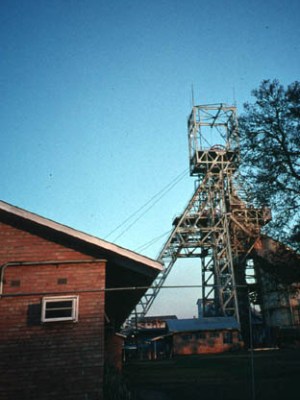SEDIMENTARY ORE DEPOSITS
Commercial deposits of metals come in a seemingly endless variety formed by many different geological processes. Successful exploration for these accumulations, now that most of those easily spotted on the surface have been found, requires a knowledge of the processes responsible for their formation and the timing of those processes. For certain metals - Cu, Fe, Mn, Pb, U, Zn - sedimentary processes are significant or dominant in their formation [see Summary Table]. Click on the links on the left to see data for each of these commodities.
 MUDSTONES AND MINING. From this group of deposits, those of Cu, Mn, and Pb-Zn are hosted by or occur in close association with mudstones (shales). These rocks present special problems in mine developmen, from incomplete core recovery to poor site trafficability to highwall instability. The enclosing mudstones are commonly pyritic, which gives rise to problems of acid drainage and floor heave.
MUDSTONES AND MINING. From this group of deposits, those of Cu, Mn, and Pb-Zn are hosted by or occur in close association with mudstones (shales). These rocks present special problems in mine developmen, from incomplete core recovery to poor site trafficability to highwall instability. The enclosing mudstones are commonly pyritic, which gives rise to problems of acid drainage and floor heave.
MININING LIFE CYCLE. Like other ore types, there is an inevitable life cycle to these operations comprising
Exploration → Development → Maintenance → Closure
Each stage tends to involve different professional groups with different cultures and different data formats. Hence communication problems arise, sometimes leading to catastrophic failures.
See the Tailings Dams link for a set of case studies of such failures and the Acid Mine Drainage link for remediation of mine waste water using constructed wetlands.
Site remediation

